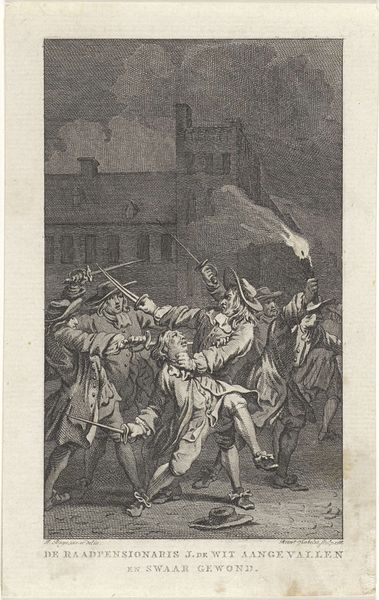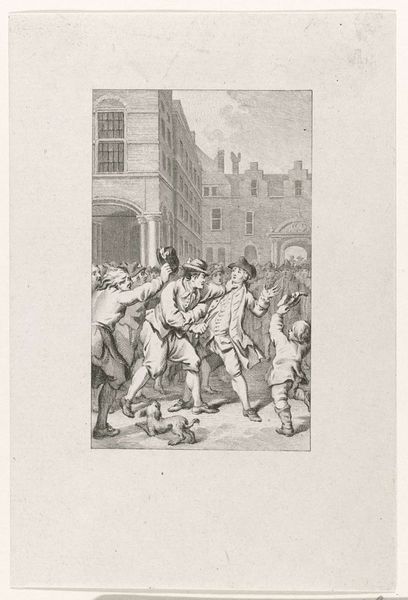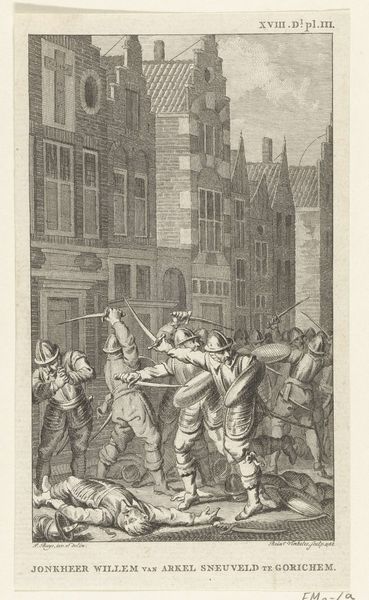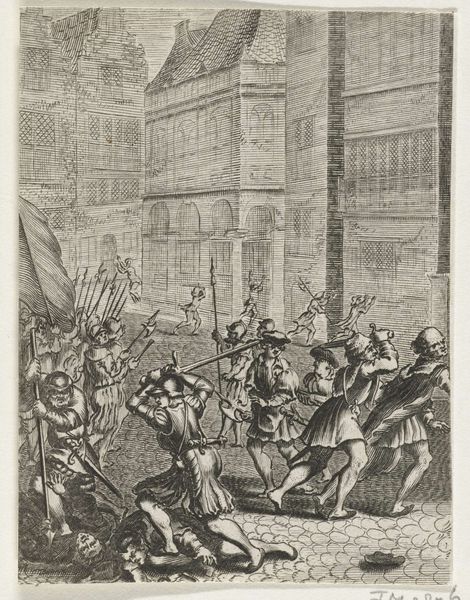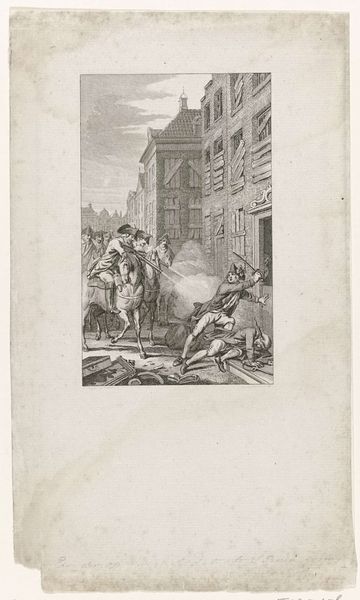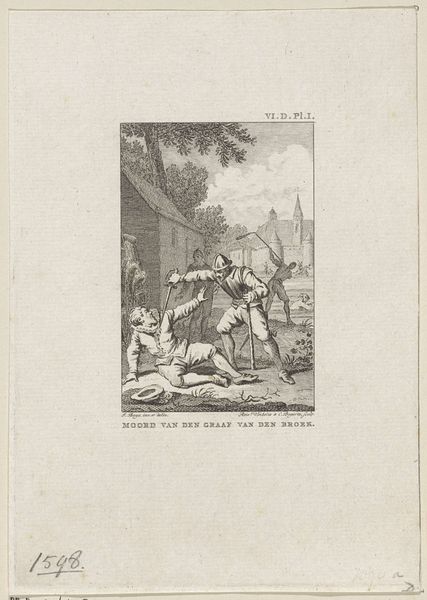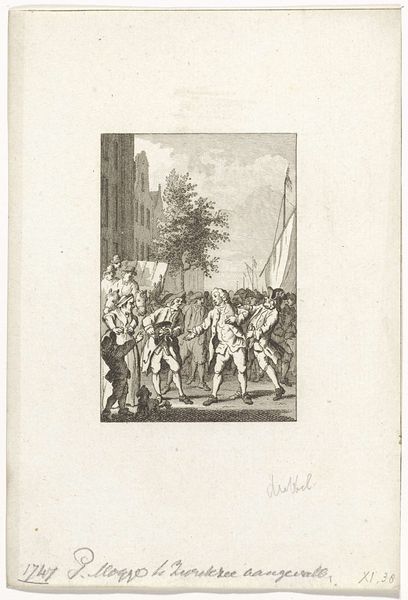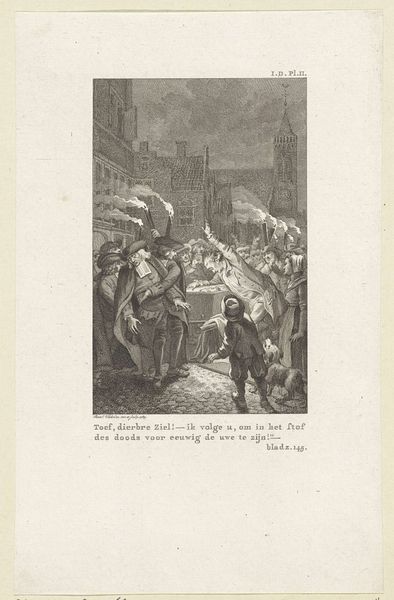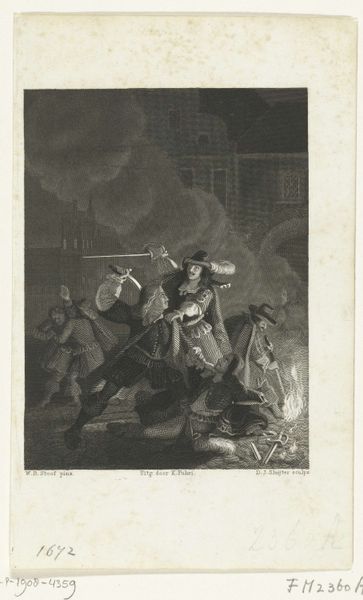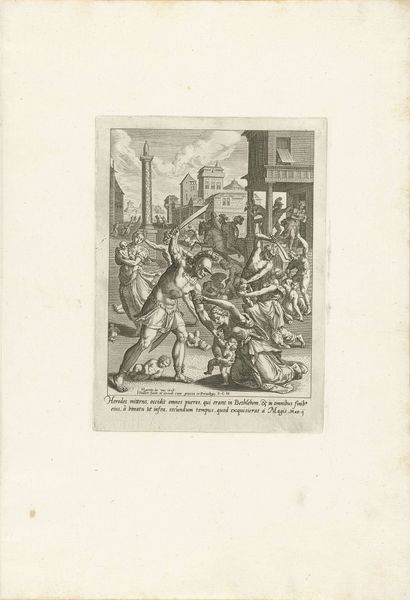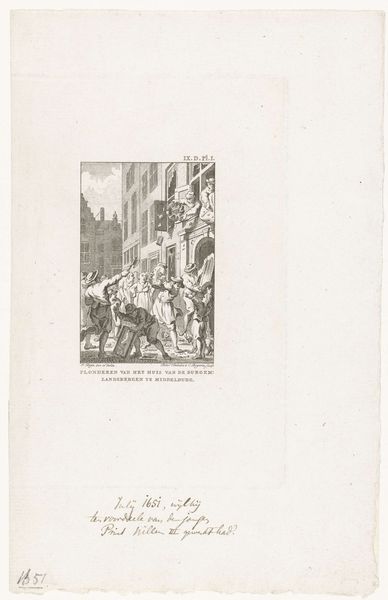
Dimensions: height 160 mm, width 100 mm
Copyright: Rijks Museum: Open Domain
Editor: So, this is "Gillis van der Misse gedood te Goes, 1657" by Reinier Vinkeles, created sometime between 1783 and 1795. It's an engraving, giving it a stark, almost graphic feel. I'm struck by the detail in such a small image. What catches your eye? Curator: For me, it’s the printmaking process itself. Consider the labor involved in producing this image. An engraving like this wasn't just about artistic expression; it was a means of disseminating information and constructing narratives, carefully crafted, line by line. This work challenges any clean divide between 'art' and 'craft,' don't you think? Editor: I hadn't really thought about it that way. I was more focused on the violent scene, the historical narrative. But you're right, there's so much labor evident. Did the accessibility of printed images democratize art and information during this period? Curator: Absolutely. The materiality of the print—the paper, the ink, the engraved plate—speaks volumes about its social function. The print as a commodity; think of it moving within networks of exchange, informing public opinion. Who was meant to see it, and how might the message it conveyed influence material action? Editor: That makes sense. So, it’s not just about the depiction of Gillis van der Misse's death, but about the print itself and what it represented in that time. It makes me think differently about how art can be a form of cultural production, embedded within specific social conditions. Curator: Precisely. Looking at it through the lens of production, consumption, and its role within broader historical forces, is key. Editor: I never considered the labor or materiality of the art piece, but I'll remember this take on it. Thanks for broadening my perspective! Curator: My pleasure. The material world of art provides an entry point into deeper socio-historical understanding.
Comments
No comments
Be the first to comment and join the conversation on the ultimate creative platform.


